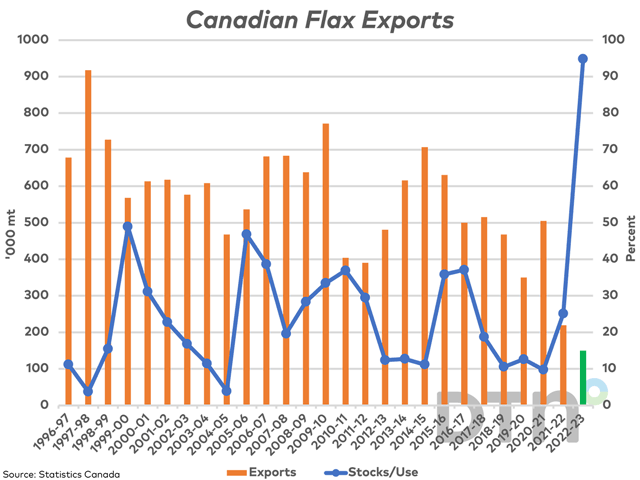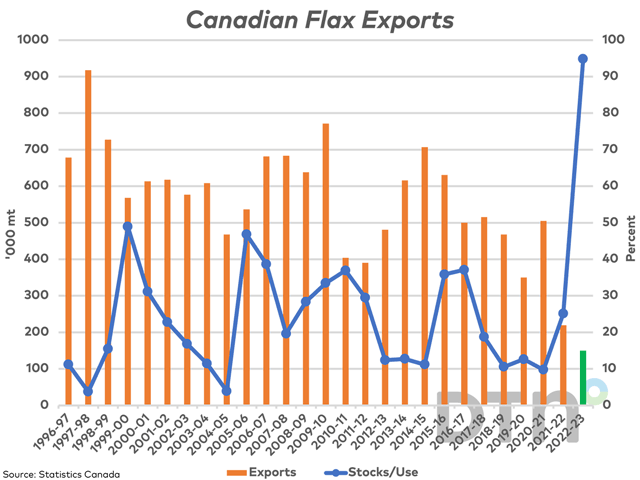Canada Markets
AAFC Revises Flax Exports Sharply Lower
The February Canada: Outlook for Principal Field Crops included a sharp reduction in the estimate for Canada's 2022-23 flax exports, revised from the January estimate of 375,000 metric tons to 150,000 mt in February. Stocks for 2022-23 were revised 175,000 mt higher to 275,000 mt, the largest stocks in seven years or 95% of 2022-23 use or disappearance.
As of Dec. 31, Statistics Canada reported flax inventory at 454,000 mt, up 75% from 2021-22. Also as of December, Statistics Canada reported exports of 58,228 mt, down 47.4% from the 110,795 mt shipped in the same period of 2021-22 and the three-year average of 154,192 mt.
P[L1] D[0x0] M[300x250] OOP[F] ADUNIT[] T[]
AAFC's February commentary points to decreased Asian buying. Statistics Canada reports 76.6% of exports from August through December destined for the United States, while movement to countries like China has fallen off a cliff. This is no surprise, with media reporting for several months that supplies from Russia and Kazakhstan have made huge inroads into Asian and European markets.
Saskatchewan Agriculture price data continues to show flax prices grinding lower, with the elevator price at $636.34/mt as of Feb. 15, down $17.05/mt from the previous week, down from $1,045.59/mt reported one year ago and the lowest price seen since October 2020, outside of two weeks where provincial data shows a lower price.
The challenging export market will test the resolve of producers to seed flax in 2023. AAFC's first look at 2023 planting intentions in January showed an increase in forecast seeded acres of 86,485 acres to 864,850 acres, just slightly below the five-year average of 900,627 acres.
The February estimate shows a modest 4.7% drop in acres to 741,300 acres which would be the lowest realized since 1992. A drop below the 735,000 acres seeded in 1992 is very conceivable, which would result in the lowest acres planted since 1950 when 584,000 acres of flax were seeded.
Cliff Jamieson can be reached at cliff.jamieson@dtn.com
Follow him on Twitter @Cliff Jamieson
(c) Copyright 2023 DTN, LLC. All rights reserved.






Comments
To comment, please Log In or Join our Community .